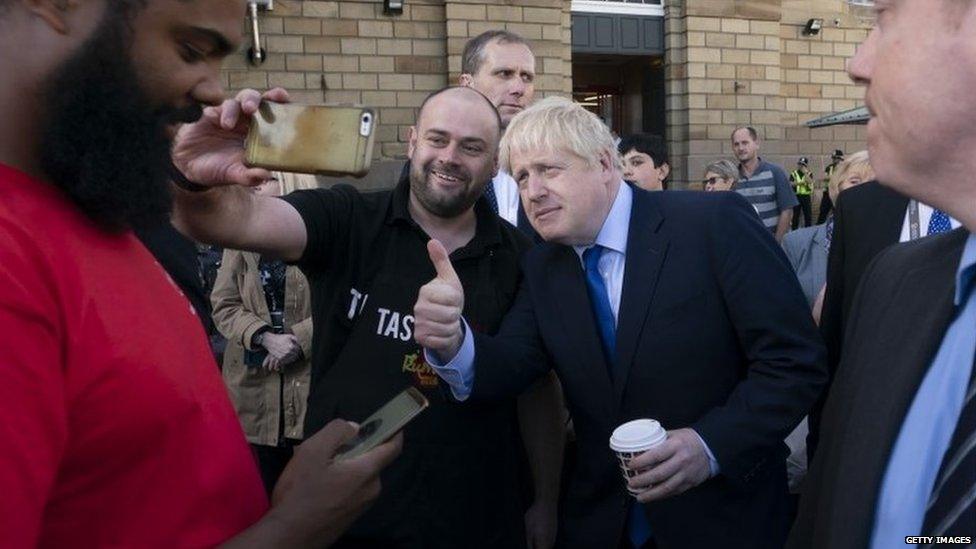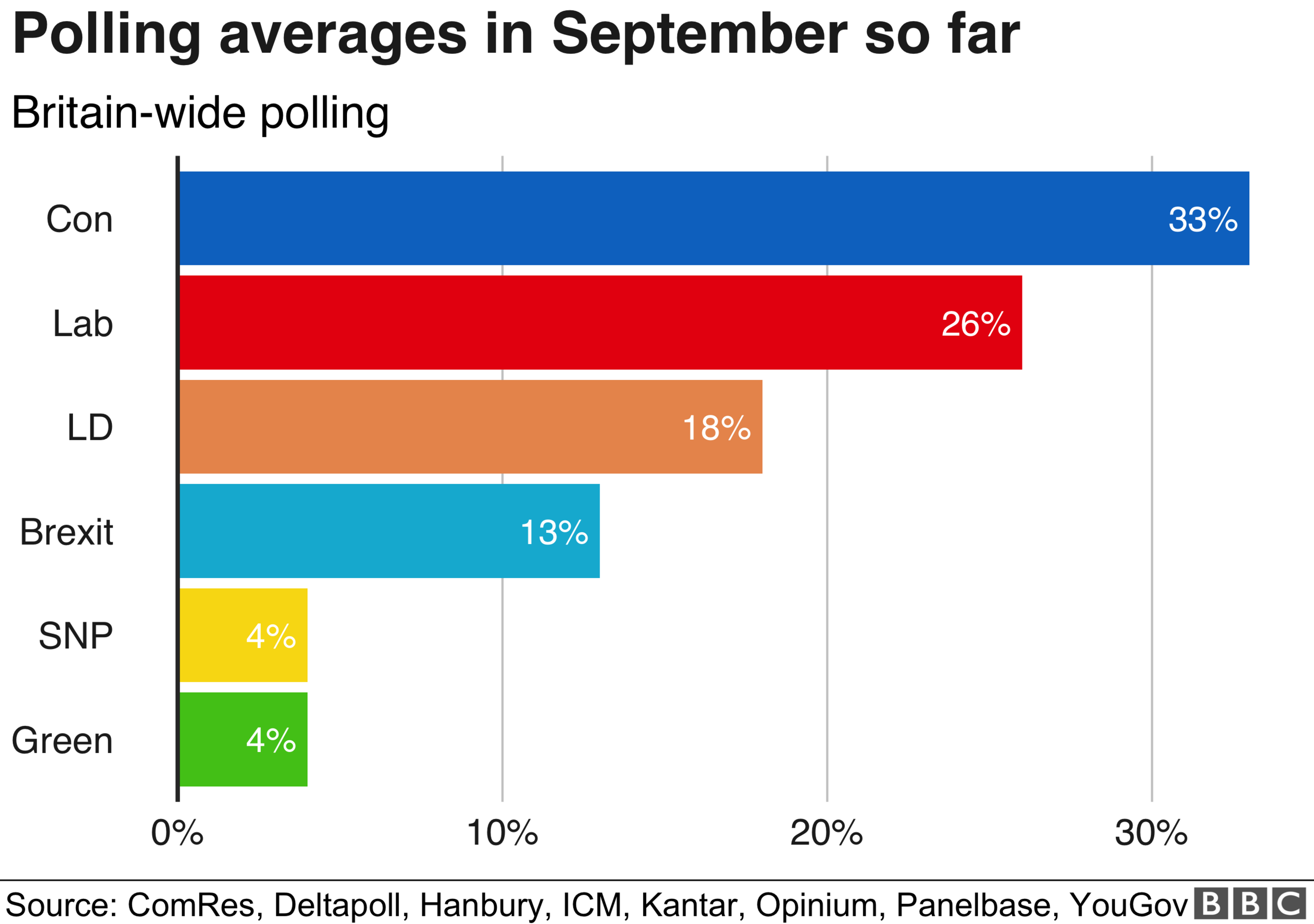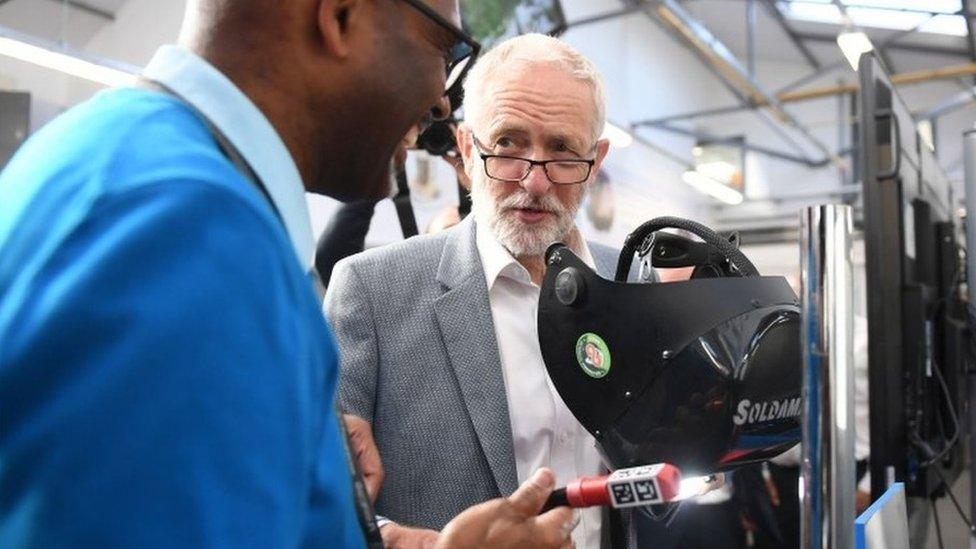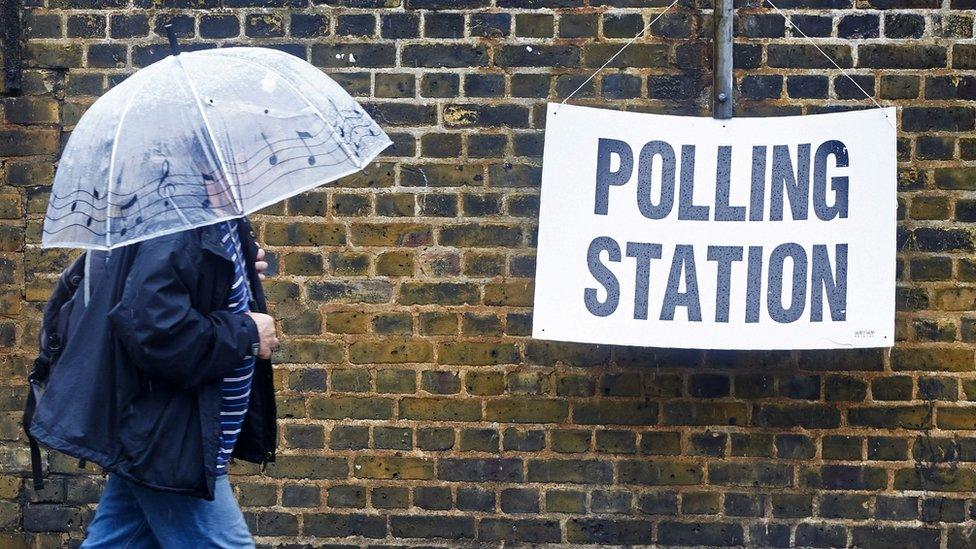What do the latest polls tell us about likely result of general election?
- Published

The Tories are hoping to prise Leave-voting seats in the North to offset losses elsewhere
At the 2017 general election the two main parties, the Conservatives and Labour, received 84% of all votes across Britain.
That reversed a long-term trend which has seen the electorate become more fragmented.
However, recent polling suggests the 2017 result was an aberration. The big two parties have fallen back again since then with voters saying they will switch to other parties - particularly the Liberal Democrats and Brexit Party.
The Tories and Labour are also down in Scotland but there the picture is different because the SNP are dominant.
Bounce
Looking at Britain-wide polls, the Conservatives have enjoyed a clear bounce since Boris Johnson became prime minister.
In polls published this month, they've been averaging at about 33%. That compares with about 25% in the month before he moved into Downing Street.

The bounce has been achieved almost entirely at the expense of the Brexit Party, whose support has almost halved since its high point at the time of the European Parliament elections in May.
Labour and the Liberal Democrats have remained pretty static since then. For Labour, that's at a level considerably below where they were at the start of the year. For the Liberal Democrats, it's the opposite.
The Green Party, which also peaked around the time of the Euro elections, have fallen back.
Election
What could this mean for the expected forthcoming election?
Well, despite the bounce, the Conservatives are a long way down from the 43% they achieved in 2017. Their only comfort is that Labour are down even more.
On a uniform national swing, the current polls suggest a small overall shift from Labour to the Conservatives.

Labour are currently well down on the vote share they achieved in 2017
There were a lot of very close constituencies at the last election, so that small swing could actually be enough for the Conservatives to pick up perhaps a couple of dozen Labour seats.
The trouble is that those gains would likely be offset by losses to the SNP and Lib Dems, if the overall result reflected the polls.
The outcome - another hung parliament - would be on the cards.
However, the hope in Downing Street is that the Conservatives will be able to pick up more Labour seats than the national polls suggest by concentrating on constituencies that voted Leave in the 2016 EU referendum.
By repeating a clear message on delivering Brexit, they hope seats that have been Labour for decades could fall - particularly in the Midlands and in northern coastal towns.
If successful, this strategy could see the Conservatives win an overall majority in the House of Commons on a relatively modest national vote share.
- Published27 November 2019
